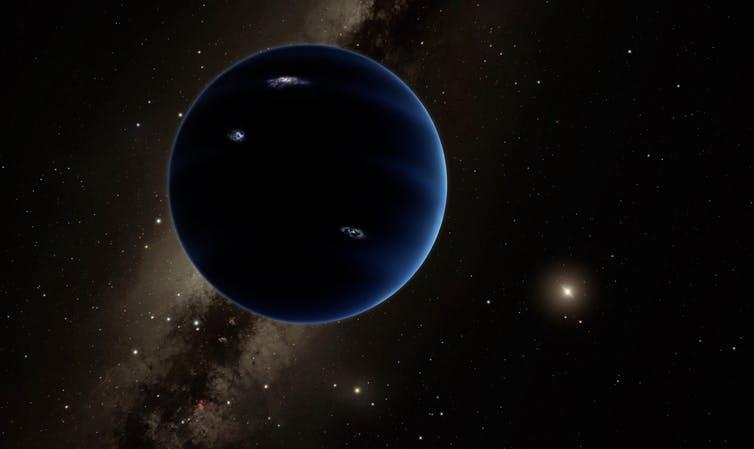'Planet 9': Harvard scientists launch plan to find 'primordial black hole' at edge of solar system

Your support helps us to tell the story
From reproductive rights to climate change to Big Tech, The Independent is on the ground when the story is developing. Whether it's investigating the financials of Elon Musk's pro-Trump PAC or producing our latest documentary, 'The A Word', which shines a light on the American women fighting for reproductive rights, we know how important it is to parse out the facts from the messaging.
At such a critical moment in US history, we need reporters on the ground. Your donation allows us to keep sending journalists to speak to both sides of the story.
The Independent is trusted by Americans across the entire political spectrum. And unlike many other quality news outlets, we choose not to lock Americans out of our reporting and analysis with paywalls. We believe quality journalism should be available to everyone, paid for by those who can afford it.
Your support makes all the difference.Harvard scientists have proposed a plan to find out the nature of a hypothesised object at the edge of our solar system.
The proposal would allow for scientists to find whether is a black hole at the distant reaches of our neighbourhood – and whether that is what actually makes up the mysterious "planet nine" that some believe to be lying undiscovered out there.
Numerous researchers have suggested that there could be another planet lurking at the edges of our solar system. But it has never been observed directly – instead, it has been suggested that other objects around it appear to move so strangely that there must be some undiscovered object out there disturbing them.
Others have suggested that same behaviour could actually be caused by a primordial black hole, which would also have effects on the objects around it but would be very difficult to observe at such a distance. Any possible black hole would also be tiny: as big as a grapefruit, with a mass of about five earths.
Now they have suggested that it would be possible to test that theory by looking for "accretion flares". The discovery of those flares would allow scientists to know for sure whether "Planet Nine" is actually a black hole.
“In the vicinity of a black hole, small bodies that approach it will melt as a result of heating from the background accretion of gas from the interstellar medium onto the black hole,” said Amir Siraj, an undergraduate student at Harvard who worked to propose the idea. “Once they melt, the small bodies are subject to tidal disruption by the black hole, followed by accretion from the tidally disrupted body onto the black hole.”
That would be the only way to see any black hole – because their nature means they cannot be otherwise seen.
“Because black holes are intrinsically dark, the radiation that matter emits on its way to the mouth of the black hole is our only way to illuminate this dark environment," said Avi Loeb, Frank B. Baird Jr. Professor of Science at Harvard, who has also proposed the plan.
Scientists hope they would be able to spot those flares by using the Legacy Survey of Space and Time (LSST) mission, which is expected to start surveying the sky later this year. Without that technology, we do not have instruments sensitive enough to be able to see those accretion flares.
“LSST has a wide field of view, covering the entire sky again and again, and searching for transient flares,” Professor Loeb said in a statement. “Other telescopes are good at pointing at a known target but we do not know exactly where to look for Planet Nine. We only know the broad region in which it may reside.”
The technique could be used for other, similar work, the researchers note in their new paper. But the possible Planet Nine was chosen partly because of the huge amounts of interest in the idea, as well as the extra information it would help provide about our solar system and beyond.
“The outskirts of the solar system is our backyard. Finding Planet Nine is like discovering a cousin living in the shed behind your home which you never knew about,” said Professor Loeb. “It immediately raises questions: why is it there? How did it obtain its properties? Did it shape the solar system history? Are there more like it?”
Join our commenting forum
Join thought-provoking conversations, follow other Independent readers and see their replies
Comments